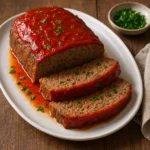
Goulash, a beloved dish that warms the hearts and stomachs of many, has a fascinating history that stretches far beyond its humble ingredients. Originating from Hungary, this savory stew has evolved over the centuries, adapting to various cultures and tastes while maintaining its core essence. In this blog post, we’ll explore 25 intriguing facts about goulash that highlight its unique flavors, regional variations, and the stories behind this iconic meal. Whether you’re a culinary enthusiast or just curious about this delicious dish, join us as we delve into the world of goulash and discover what makes it a staple in kitchens around the globe!
Goulash originated in Hungary and is considered a national dish. Goulash has deep roots in Hungarian culture and cuisine, where it has been enjoyed for centuries. It is often regarded as the quintessential Hungarian dish, embodying the flavors and traditions of the region. The dish’s popularity has spread far beyond Hungary, inspiring variations in many countries, but its origins remain firmly tied to Hungarian culinary history.
The word “goulash” comes from the Hungarian word “gulyás,” which means herdsman or cowboy. The term “gulyás” reflects the dish’s origins among Hungarian shepherds who would prepare it while tending to their livestock. These herdsmen would cook the stew in large cauldrons over an open fire, using simple ingredients that were readily available. This connection to pastoral life highlights the dish’s rustic roots and its evolution into a beloved comfort food.
Traditional goulash is a stew made with meat, vegetables, and spices, primarily paprika. At its core, goulash is a hearty stew that typically features chunks of meat—most commonly beef—alongside a variety of vegetables such as potatoes, carrots, and bell peppers. The defining characteristic of goulash is its use of paprika, a spice made from ground peppers that imparts a rich flavor and vibrant color to the dish. The combination of ingredients creates a warming meal that is both satisfying and flavorful.
Paprika is a key ingredient in goulash and was introduced to Hungary in the 16th century. Paprika, which is derived from dried and ground peppers, became a staple in Hungarian cooking after its introduction from the Americas in the 16th century. It quickly gained popularity due to its ability to add depth and complexity to dishes. In goulash, paprika not only enhances the flavor but also contributes to its signature red hue, making it visually appealing and appetizing.
Goulash was originally a peasant dish, made by herdsmen who cooked it in a cauldron over an open fire. The origins of goulash as a peasant dish reflect the resourcefulness of rural communities. Herdsmen would use whatever ingredients they had on hand, often cooking the stew in a large cauldron suspended over an open flame. This method of cooking allowed for a communal approach to meals, where families and friends would gather to enjoy the hearty stew after a long day of work.
There are many regional variations of goulash, including Hungarian, Czech, and Slovak versions. While Hungarian goulash is the most well-known, various countries have developed their own interpretations of the dish. For example, Czech goulash tends to be thicker and may include different spices, while Slovak goulash often incorporates dumplings. Each variation reflects local ingredients, culinary traditions, and cultural influences, showcasing the adaptability of goulash across different cuisines.
Hungarian goulash is typically made with beef, while other variations may use pork or lamb. The traditional Hungarian version of goulash predominantly features beef, which is slow-cooked to tender perfection. However, depending on regional preferences or availability, other meats such as pork or lamb may be used. Each type of meat brings its unique flavor profile to the dish, allowing for a diverse range of goulash experiences.
In Hungary, goulash is often served with bread or dumplings. Goulash is typically accompanied by hearty sides that complement its rich flavors. In Hungary, it is common to serve goulash with crusty bread, perfect for soaking up the flavorful broth. Alternatively, dumplings, known as “nokedli,” are also a popular choice, providing a comforting and filling addition to the meal.
Goulash can be thick or thin, depending on the recipe and regional preferences. The consistency of goulash can vary widely, with some recipes resulting in a thick, stew-like dish, while others produce a thinner broth. This variability is influenced by the cooking method, the amount of liquid used, and personal preferences. Some people prefer a heartier goulash that can be eaten with a fork, while others enjoy a soupier version that can be sipped from a bowl.
The dish is often seasoned with other spices such as caraway seeds and black pepper. In addition to paprika, goulash can be enhanced with a variety of other spices to elevate its flavor. Caraway seeds, known for their warm and slightly sweet taste, are often added to goulash, providing a unique depth of flavor. Black pepper is another common seasoning that adds a hint of heat. The careful balance of these spices contributes to the complexity and richness of the dish.
Goulash is commonly served at festivals and family gatherings in Hungary. In Hungary, goulash is more than just a meal; it is a cultural symbol often associated with community and celebration. It is frequently served at festivals, fairs, and family gatherings, where large pots of goulash are cooked outdoors, allowing people to come together and enjoy the dish in a communal setting. This tradition highlights goulash’s role as a comfort food that fosters connection and togetherness among families and friends.
In the United States, goulash has evolved into a simpler, pasta-based dish known as American goulash. American goulash is a distinct adaptation of the traditional Hungarian dish, reflecting the culinary influences of the U.S. It typically includes ground beef, elbow macaroni, tomato sauce, and various seasonings. This version is often quicker to prepare and is popular for its convenience and ability to feed a crowd. While it shares a name and some basic elements with Hungarian goulash, American goulash is a unique dish in its own right.
American goulash typically includes ground beef, macaroni, tomato sauce, and various seasonings. The American version of goulash is characterized by its use of ground beef, which cooks quickly and easily. The addition of elbow macaroni makes it a hearty one-pot meal that is both filling and comforting. Tomato sauce provides moisture and flavor, while seasonings like garlic, onion, and Italian herbs enhance the taste. This dish has become a staple in many American households, often served as a weeknight dinner.
Goulash is often cooked slowly to enhance the flavors of the ingredients. One of the key aspects of preparing goulash is the slow cooking process, which allows the flavors to meld together and develop depth. By simmering the ingredients over low heat for an extended period, the meat becomes tender, and the spices infuse the broth. This method not only enhances the taste but also creates a rich aroma that fills the kitchen, making it a comforting and inviting dish.
The dish can be made in large quantities, making it popular for meal prepping. Goulash is an ideal dish for meal prepping due to its ability to be made in large batches. It stores well in the refrigerator or freezer, allowing for easy reheating and serving throughout the week. This makes it a practical choice for busy families or individuals looking to save time on cooking while still enjoying a hearty, homemade meal. The flavors often improve after a day or two, making leftovers even more enjoyable.
Goulash is sometimes referred to as “pörkölt” in Hungary, although pörkölt is a different dish with a thicker consistency. While goulash and pörkölt share some similarities, they are distinct dishes in Hungarian cuisine. Pörkölt is a meat stew that is thicker and often contains less liquid than goulash. It is typically made with a variety of meats and seasoned with paprika and other spices, but it lacks the vegetable component that is common in goulash. The two dishes exemplify the diversity of Hungarian culinary traditions.
The first recorded recipe for goulash dates back to the 9th century. The history of goulash can be traced back to the 9th century, when it was first documented in written recipes. These early versions of goulash were simple stews made by herdsmen, reflecting the ingredients available at the time. Over the centuries, the dish has evolved and adapted, incorporating new ingredients and cooking techniques while remaining a beloved staple of Hungarian cuisine.
Goulash can be made in a slow cooker, Instant Pot, or on the stovetop. Modern cooking appliances have made it easier than ever to prepare goulash. A slow cooker allows for hands-off cooking, where ingredients can be combined and left to simmer for hours. An Instant Pot can significantly reduce cooking time while still producing tender meat and flavorful broth. Traditional stovetop preparation remains popular, providing a more hands-on approach that allows for constant monitoring and adjustments.
It is a popular dish in many Central European countries, including Austria, Germany, and Poland. Goulash has transcended its Hungarian origins and is widely enjoyed throughout Central Europe. Each country has developed its own version of goulash, incorporating local ingredients and culinary traditions. For example, in Austria, goulash is often served with bread dumplings, while in Germany, it may include a variety of vegetables. This regional diversity highlights goulash’s adaptability and enduring popularity across cultures.
Goulash is often garnished with sour cream or fresh herbs before serving. To enhance the flavor and presentation of goulash, it is commonly garnished with sour cream or fresh herbs before serving. Sour cream adds a creamy tang that balances the rich flavors of the stew, making each bite more enjoyable. Fresh herbs, such as parsley or dill, can also be sprinkled on top to provide a pop of color and a burst of freshness. These garnishes not only enhance the visual appeal of the dish but also contribute additional layers of flavor, making goulash a well-rounded and satisfying meal.
The dish is sometimes accompanied by pickles or hot peppers for added flavor. In Hungary and other Central European countries, goulash is often served with pickles or hot peppers as a side. The acidity of pickles complements the rich, savory flavors of the goulash, providing a refreshing contrast that enhances the overall dining experience. Hot peppers can add a spicy kick, catering to those who enjoy a bit of heat in their meals. These accompaniments not only elevate the flavor profile but also add a layer of texture to the meal.
Goulash has been featured in various cookbooks and cooking shows, showcasing its versatility. Over the years, goulash has gained recognition in culinary literature and media, appearing in numerous cookbooks and cooking shows around the world. Chefs and home cooks alike appreciate goulash for its adaptability, allowing for variations that cater to different tastes and dietary preferences. This exposure has helped to popularize the dish beyond its traditional roots, inspiring many to experiment with their own interpretations of goulash.
The dish is high in protein due to the meat content and can be made healthier by adding more vegetables. Goulash is primarily made with meat, which contributes a significant amount of protein to the dish. This makes it a filling and satisfying meal. To enhance its nutritional profile, cooks can incorporate a variety of vegetables such as bell peppers, carrots, and peas. Adding more vegetables not only increases the fiber content but also boosts vitamins and minerals, making goulash a more balanced and health-conscious option.
Goulash is enjoyed year-round, but it is particularly popular in colder months. While goulash can be enjoyed at any time of the year, it tends to be especially popular during the colder months. The hearty nature of the dish, combined with its warming spices, makes it a comforting choice for chilly weather. Many people associate goulash with cozy family meals, gatherings, and celebrations during the fall and winter seasons, reinforcing its status as a comfort food.
The popularity of goulash has led to its inclusion in many international cuisines, adapting to local tastes and ingredients. As goulash has traveled beyond Hungary, it has been embraced by various cultures, leading to a multitude of adaptations and interpretations. Different countries have incorporated local ingredients, spices, and cooking methods, resulting in unique versions of the dish. This global appreciation for goulash showcases its versatility and the way it can be tailored to reflect the culinary traditions of different regions.
FAQs About Goulash
What is Goulash?
Goulash is a hearty stew or soup that originated in Hungary. It’s characterized by its rich, flavorful broth, tender meat (often beef), and a variety of vegetables like paprika, onions, and carrots. Goulash can be served as a soup or a stew, depending on the amount of liquid.
What are the main ingredients in Goulash?
The core ingredients of Goulash typically include:
- Meat: Beef is the most common, but other meats like pork or venison can also be used.
- Vegetables: Onions, carrots, and bell peppers are common additions.
- Paprika: This spice gives Goulash its distinctive flavor.
- Broth: Beef or vegetable broth is used to create the base of the dish.
- Herbs and spices: Bay leaves, thyme, and black pepper are often used to season the dish.
How is Goulash traditionally served?
Goulash can be served in a variety of ways. It can be served as a soup, with plenty of broth, or as a stew, with less liquid and more meat and vegetables. It’s often served with noodles, dumplings, or bread.
What are some variations of Goulash?
There are many regional variations of Goulash, each with its own unique twist. Some popular variations include:
- Hungarian Goulash: This is the classic version, often made with beef, paprika, onions, and carrots.
- Czech Goulash: This version is often made with beef, pork, or venison and is typically served with dumplings.
- Slovak Goulash: This version is often made with pork and is typically served with bread.
How can I make Goulash at home?
Making Goulash at home is relatively easy. Here’s a basic recipe:
Ingredients:
- 1 pound beef chuck roast, cut into 1-inch cubes
- 1 onion, chopped
- 2 carrots, chopped
- 1 bell pepper, chopped
- 2 tablespoons paprika
- 1 teaspoon caraway seeds
- 1 bay leaf
- 1 quart beef broth
- Salt and pepper to taste
Instructions:
- Brown the meat: Season the beef with salt and pepper and brown it in a large pot over medium-high heat.
- Sauté the vegetables: Add the onion, carrots, and bell pepper to the pot and sauté until softened.
- Add the spices: Stir in the paprika, caraway seeds, and bay leaf.
- Simmer: Pour in the beef broth and bring to a boil. Reduce heat and simmer, covered, for 2-3 hours, or until the meat is tender.
- Serve: Serve hot with noodles, dumplings, or bread.
Can I freeze Goulash?
Yes, you can freeze Goulash. Let it cool completely before transferring it to an airtight container. It can be stored in the freezer for up to 3 months.
By following these tips and experimenting with different ingredients and flavors, you can create a delicious and hearty Goulash that will satisfy your cravings.









